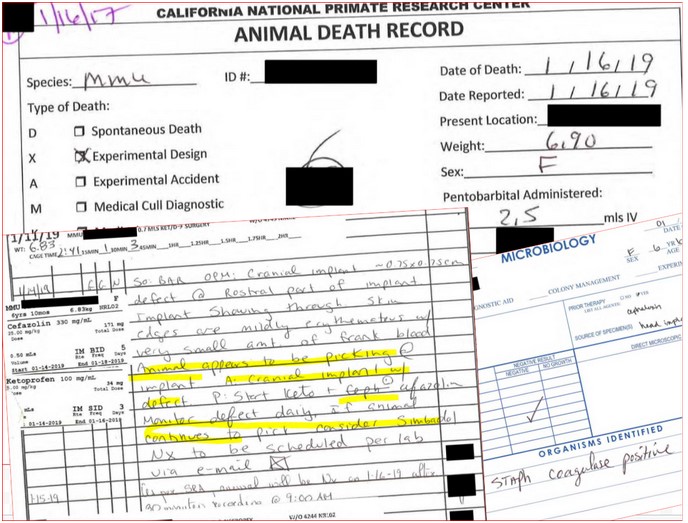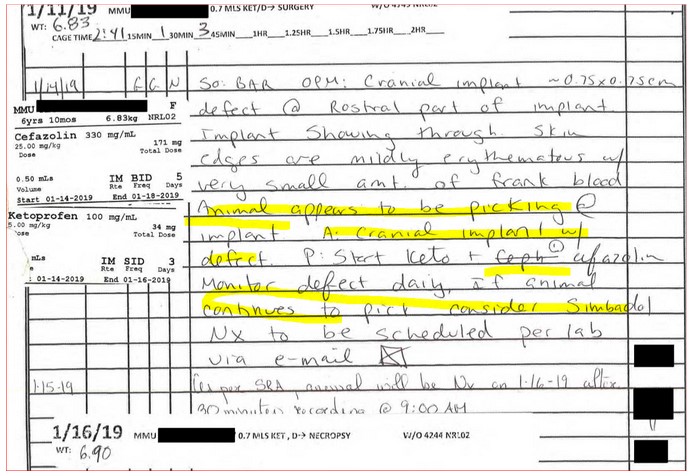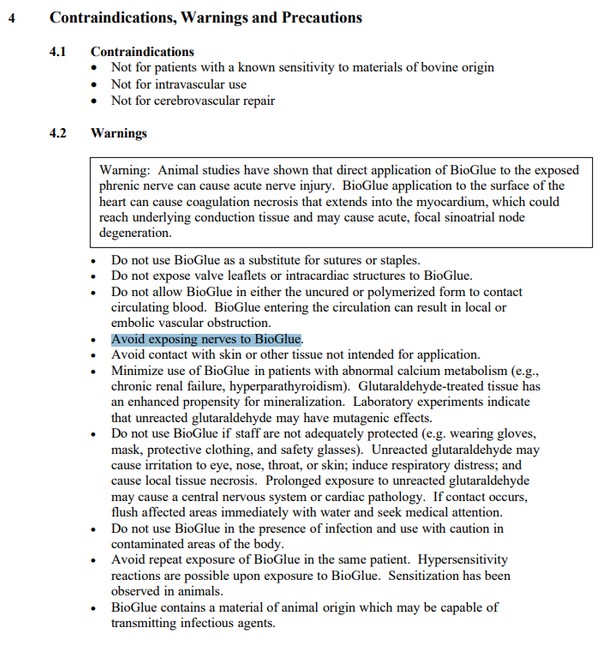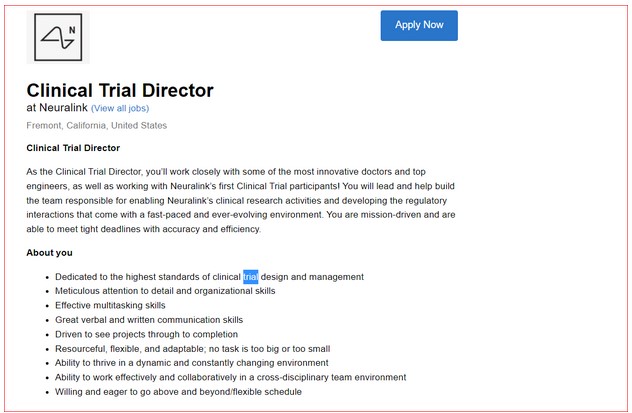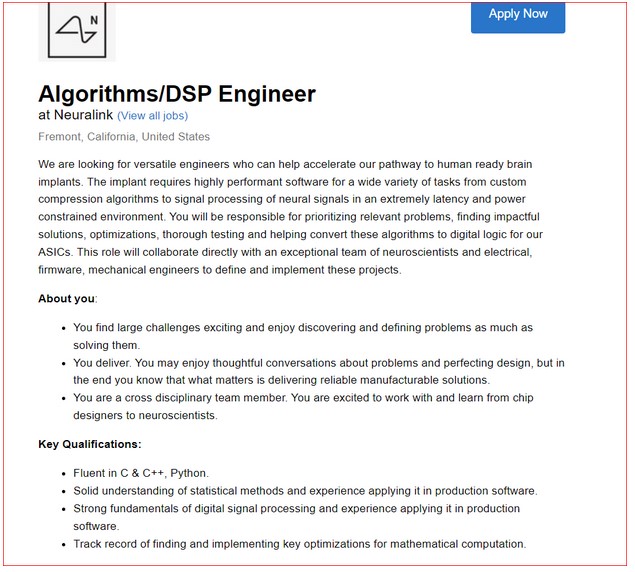Elon Musk’s Neuralink brain chip has killed yet another monkey. Nonetheless, steps toward human testing forge forward.
A total of 15 macaque monkeys out of 23 have died at U.C. Davis in a Neuralink-funded project titled “Development of a Large-Scale Brain-Machine Interface in Rhesus Macaques.” By now “the others may be dead too,” says Ryan Merkley, the director of research advocacy for the Physicians Committee For Responsible Medicine (PCRM).
In addition to monkeys, Musk’s company whose slogan is “breakthrough technology for the brain” has also implanted Bluetooth-enabled chips in pigs and sheep in order to connect and communicate with computers via a small receiver.
This technology is brought to us courtesy of NanoTech King and former Harvard professor Charles Lieber who awaits sentencing – not for colluding with the CCP or his 66-plus ethically questionable patents, but for tax evasion.
Neuralink, which began experiments in 2017, has admitted to animals dying, but they deny cruelty. In one 2020 video titled “Animal Care,” employees affirm their pigs are treated properly. Yet if you actually pay attention, you’ll notice the featured hog looks mangled and has a horrific vertical scar down his forehead. It’s macabre and sickening.
If you treat an animal decently before and after you implant machinery into their brain, does that somehow make it proper or humane?
Please follow Maryam Henein on Twitter
You can support her work on Patreon
Follow Maryam on Telegram and Gab
Veterinary records obtained by PCRM, a US non-profit that advocates alternatives to animal testing, describe monkeys picking at their cranial implants post-surgery only to be drugged. While the animals are ‘under,’ they are hooked up to “electrophysiology hardware” to make sure the electronics are working. Some monkeys used in this experiment underwent “multiple major survival surgical procedures,” in which as many as 10 craniotomies were performed on one animal.
Merkley pointed out how the animals must feel post-surgery, not to mention the psychological ramifications.
The Nefariousness of Neuralink
Neuralink had a contractual agreement with the University of California Davis, receiving more than $1.4 million for their participation.
In response to a public records request by the doctors’ group, UC Davis withheld almost all documents, claiming it was in the “public interest” to do so.
Yes, because the truth will literally make you nauseous.
After PCRM filed an initial public records lawsuit in May 2021, they obtained more than 600 pages of disturbing documents, including animal use protocols and amendments, health records, surgical logs, necropsy reports, and other documents related to the use of monkeys in invasive brain experiments.
In the lawsuit, the committee also alleges that the school declined to release photos and videos of the experiments, saying the records belong to Neuralink, a private company not subject to California’s Public Records Act.
According to PCRM, Neuralink visited the university and copied the photos and videos, and then deleted them from the school’s systems.
“A private company was allowed to remove videos of these experiments from a public institution,” says Deborah Dubow Press, Esq., associate general counsel with PCRM.
Adds Merkley, “We believe UC Davis is in possession of photos, but it claims videos were removed by Neuralink and never technically in the possession of the university. We’re arguing that those videos were created using public resources with the help of public employees, so they should be subject to our records request.”
Brazen, audacious, and yet permitted.
In February 2022, PCRM filed a second public records lawsuit to compel the university to release videos and photographs of the monkeys used in the Neuralink-funded experiments. They also sent a letter referencing the violations to the US Department of Agriculture (USDA) and requested an investigation into what are “apparent egregious violations of the Animal Welfare Act.” The USDA’s Animal and Plant Health Inspection Service has confirmed that it will look into the invasive, fatal monkey experiments.
For what it’s worth, I also witnessed what I consider to be animal cruelty at U.C. Davis in 2009 while documenting artificial insemination of queens for my film Vanishing of the Bees, narrated by Elliot Page. After filming with the entomology lab, the scientist admitted she’d just inseminated a queen with watered-down coffee just for the camera. I was aghast. I had been an unwitting accomplice. As if prying open a queen bee’s vagina and mechanically injecting her with semen wasn’t bad enough.
This time around, however, the egregious violations include removing portions of the monkeys’ skulls and inserting electrodes in their brain. Additionally, to fill in ‘dead space,’ they used an “FDA-approved” “BioGlue” in an unapproved manner, killing at least two monkeys by destroying portions of their brains.
When I looked up what the eff this substance is, I learned its ‘glutaraldehyde’ and ‘bovine serum albumin’ that together supposedly make an excellent adhesive strength by creating strong protein cross-linking bonds.
Does anyone care that it causes tissue toxicity and shouldn’t come in contact with any nerves? Once you get the rubber stamp of approval, Merkley explains that the particulars are not scrutinized.
In addition to using toxic adhesive in the noggin, the monkeys were caged alone, had steel posts screwed to their skulls, and suffered “facial trauma” and seizures following brain implants. They experienced recurring infections at implant sites, whereupon they were dosed with an overabundance of antibiotic prescriptions.
In some cases, as a result of deteriorating health, Neuralink and U.C. Davis euthanized monkeys before they were even used in the planned experiment. That means, they killed them before they even got started.
I wondered if the employees casually discussed their invasive and deadly brain-hacked experiments over alcoholic beverages at the Monkey MindPong Bar, Neuralink’s supposed hang-out spot.
The bar was named in light of Neuralink’s claim that Pager, a male macaque can play Pong – a computer game – using his mind. Pager could move a cursor on-screen without using a joystick. Neuralink said this was achieved after the Neuralink chip fed the information from the monkey’s neurons into a decoder. Yet as Merkley notes, that’s nothing new. Neuroscientists have been using neurofeedback for years. I myself have made a movie play using my brain. Meaning, you do not need to perform brain surgery to make this happen.
Neuralink’s experiments are continuing – except now they’re operating in at least two private Neuralink facilities: one in Fremont, California, and one outside of Austin, Texas.
When I learned this, I got a flash of Ex-Machina, the sci-fi thriller featuring “ground-breaking” experiments in synthetic intelligence with a highly advanced humanoid A.I., a Digital Eve if you will.
In 2020, Musk’s company opened an in-house 6,000-square-foot “vivarium” to house farm animals and rhesus macaques.
A little bit of trivia, Merkley-shared primates for ‘science’ is now a boutique industry. According to the USDA, 68,257 primates were used in experiments in 2019. Those are the latest stats. You get it, the Rona Regime has created backlogs. The island of Mauritius, for instance, gets business as a source for macaque monkeys.
Coming Soon: Hackable Human Animals
Neuralink itself writes that “all novel medical devices and treatments must be tested in animals before they can be ethically trialed in humans.”
Yet despite this remark and the fact several monkeys have already died, Neuralink is moving toward testing their brain implants on humans.
Case in point: Neuralink is hunting to recruit a Clinical Trial Director to work closely with doctors, engineers, and welcome the “first Clinical Trial Participants!” (Note: the exclamation mark  is theirs).
is theirs).
They are also hiring an Algorithms/DSP Engineer to “accelerate” pathways “to human-ready brain implants.” Literal Human Noggin Hackers.
I assume there are several out there who would literally die to be one of the first associated with Elon Musk’s pioneering.
Neuralink will have to jump through a series of regulatory hoops before implanting a device in a human brain. With that said, I personally have been approached by people who claim they already have nanotech in their brains.
“I am getting abused…. I mean really really bad. I have a lot of tech in me; I have wifi chips in my ear and skull through which they are assaulting me horrifically with 5G, nano, and more.”
When I probed (no pun intended), he responded:
“You want definitive proof? Cut this crap out of me. Find someone to cut this wifi chip out of me.”
Don’t shoot the messenger. The goal is to test on humans so why is it so far-fetched to believe they’ve already begun?
Dr. Yuval Noah Harari, Transhumanist and World Economic Forum (WEF) loyalist, recently informed us that “the days of free will are over” but that humans are now “hackable animals.”
Recall, it was under the Rona Regime that we openly became lab rats. In June 2020, in the face of the (fake) COVID-19 Hegelian-Esque emergency, a symposium was held to weigh the pros and cons of bypassing animal trials.
This was warp speed, baby.
“Although this looks promising for fast-tracking vaccine development, there is division among the scientific community about bypassing animal models before Phase I clinical trials. In addition, agencies like PETA are against using animals for research purposes. The question remains: Can vaccine research do without an animal model?”
Where are the organizations that stand against using humans for research purposes?
As Merkley states, Musk prompted this technology as a way to help people with paralysis and Parkinson’s, but yet Musk also talks about a needed “symbiosis” between human brains and A.I.
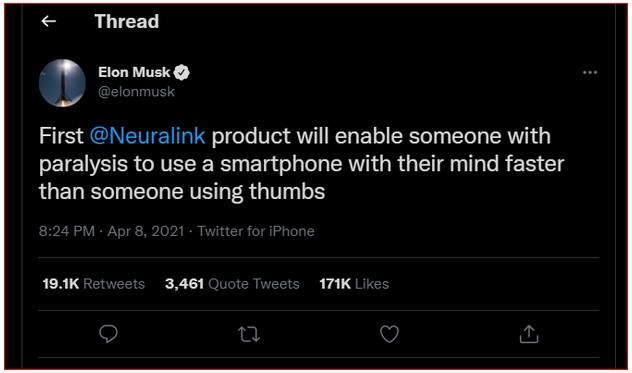 This is because Musk, Harari, and other technocrats have warned that AI could trigger the next World War and those super-intelligent robots could dominate the world. In fact, Lieber designed the neural lace “to upgrade the human brain to be more competitive against A.I.”
This is because Musk, Harari, and other technocrats have warned that AI could trigger the next World War and those super-intelligent robots could dominate the world. In fact, Lieber designed the neural lace “to upgrade the human brain to be more competitive against A.I.”
Neuralink started with rodents and has graduated to primates. I would venture to guess that Neuralink has meddled with way more than 35 monkeys. Mankind is next. Arguably, we are already the monkeys. The question remains, who will fight for us?
Maryam Henein is an investigative journalist, founder, and editor-in-chief of HoneyColony. She is also the director of the award-winning documentary film Vanishing of the Bees, narrated by Elliot Page. Follow her on Gab:@ladybee. Email her: maryam@honeycolony.com.
Please support Maryam Henein in her efforts to publish a book and short documentary: regarding the truth about George Floyd.
You can read Maryam Henein’s full article archive HERE.
Become a Patron!
Or support us at SubscribeStar
Donate cryptocurrency HERE
Subscribe to Activist Post for truth, peace, and freedom news. Follow us on SoMee, Telegram, HIVE, Flote, Minds, MeWe, Twitter, Gab, What Really Happened and GETTR.
Provide, Protect and Profit from what’s coming! Get a free issue of Counter Markets today.
Elon Musk’s Cruel Neuralink Experiments Kills 15th MONKEY, Are Humans Next?
